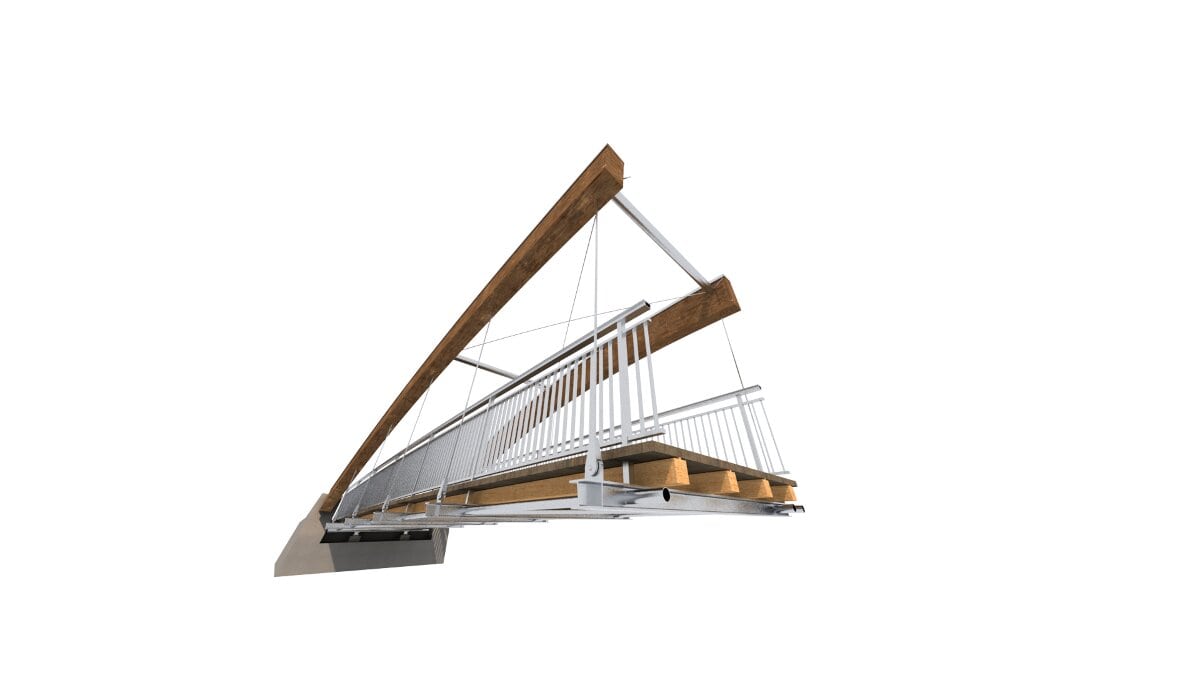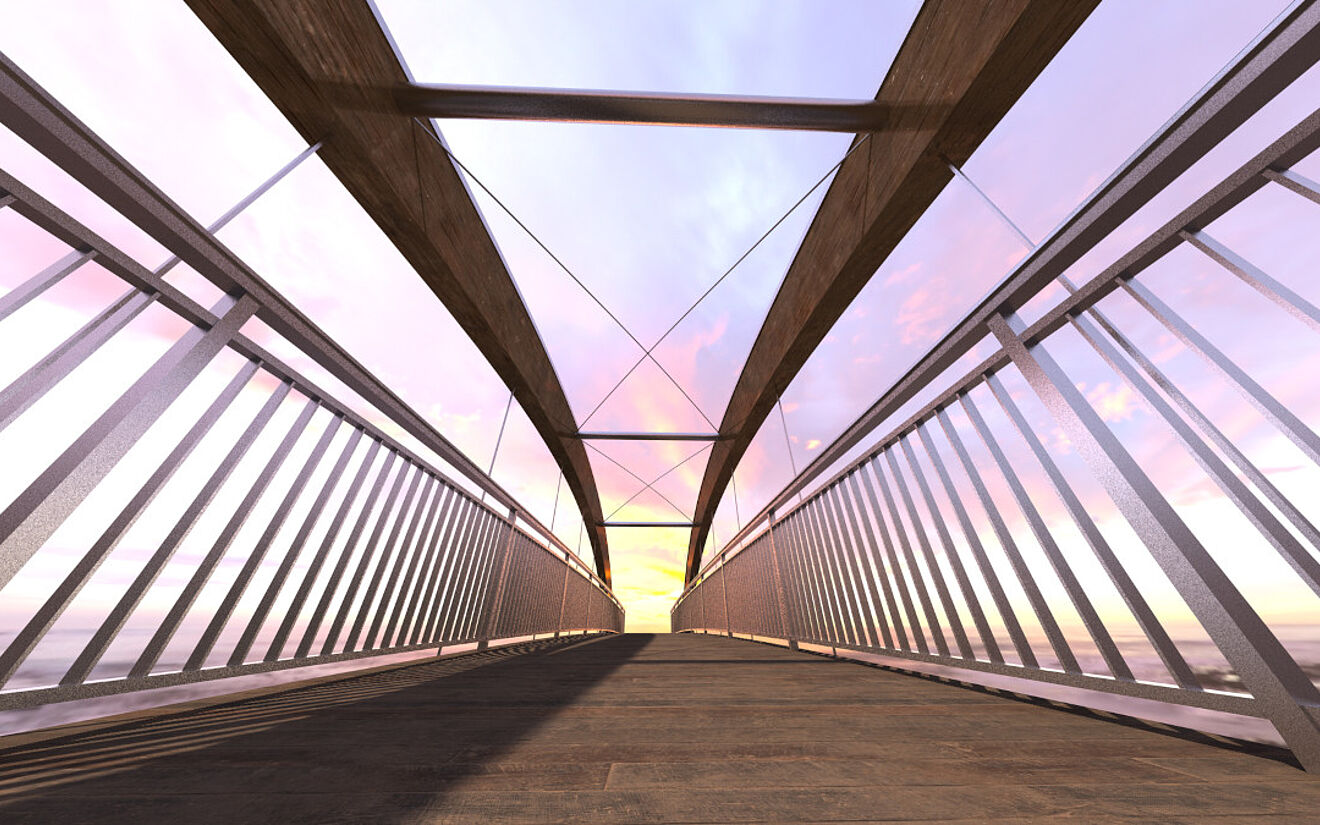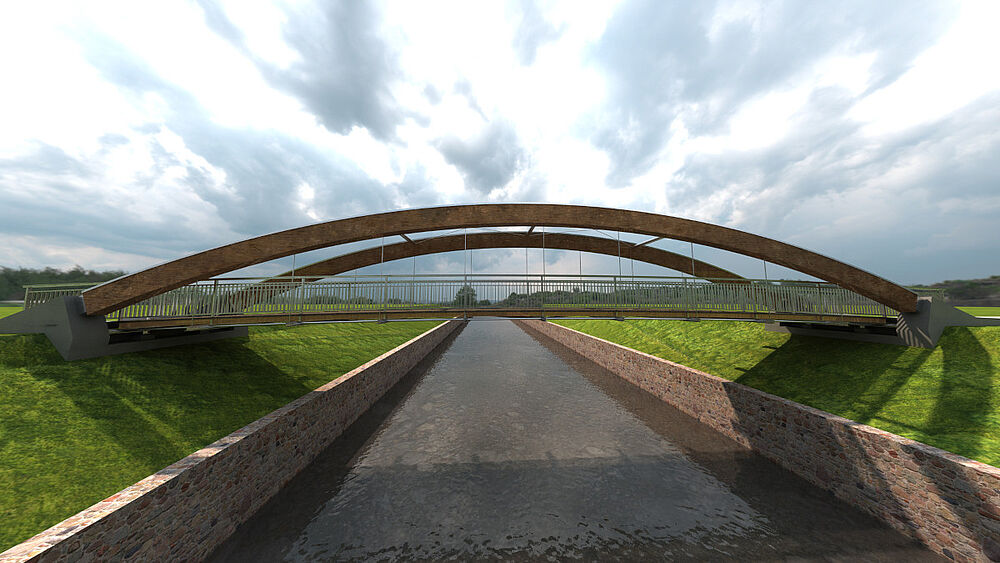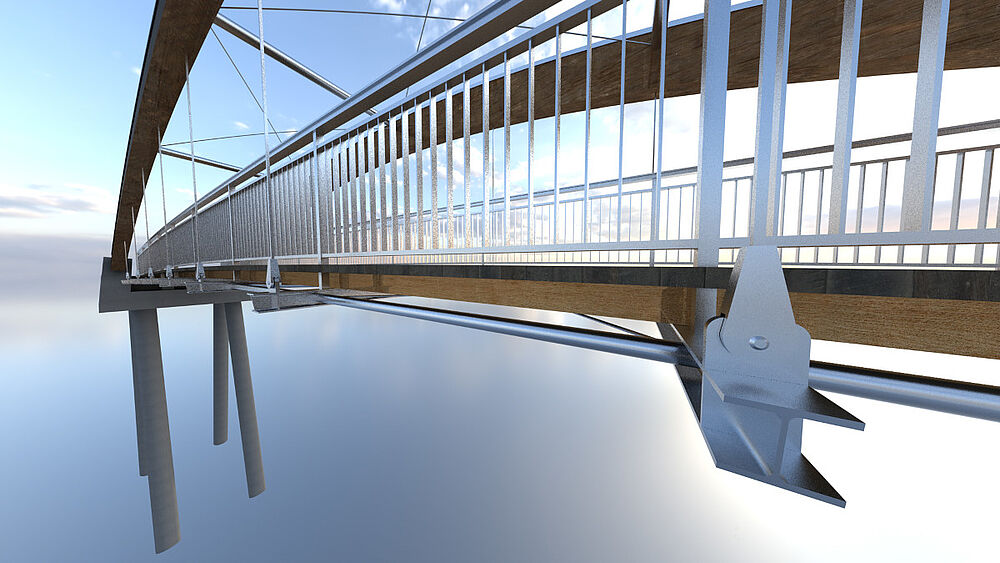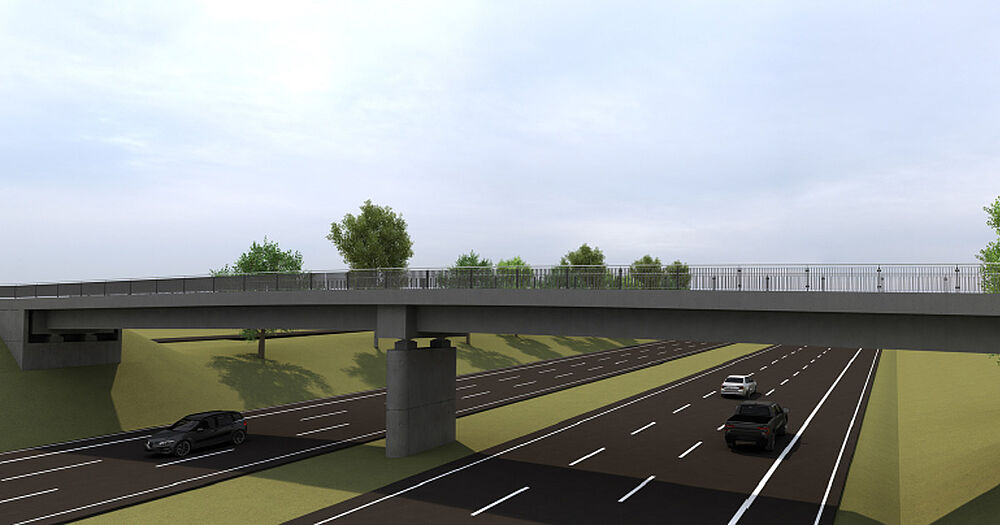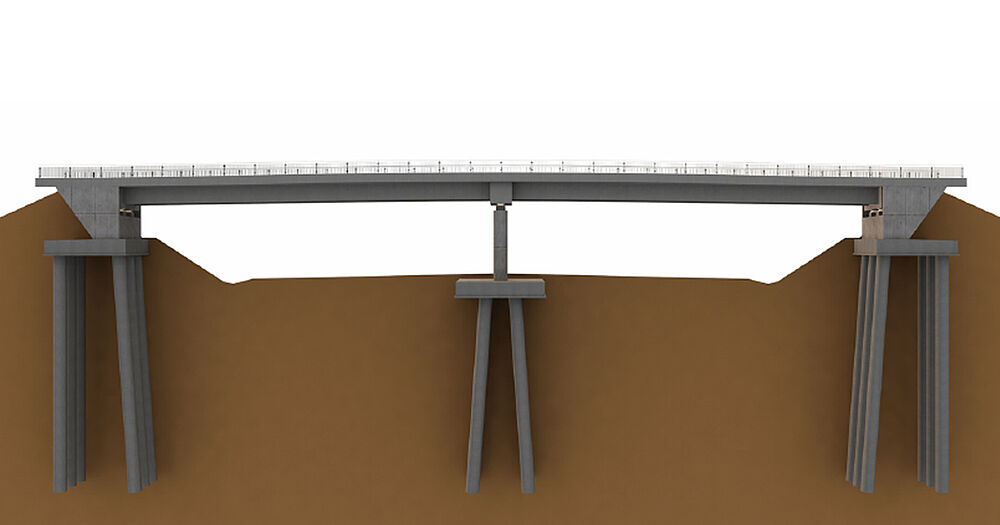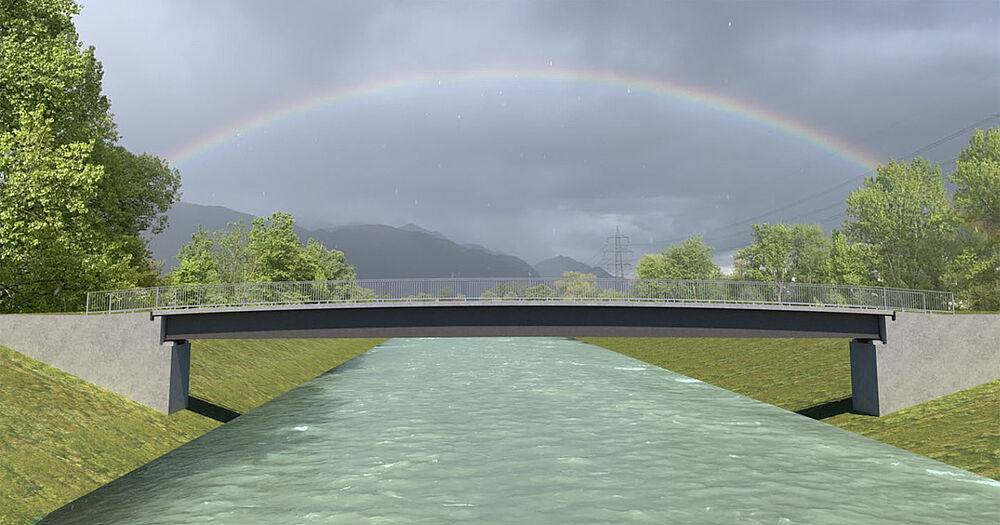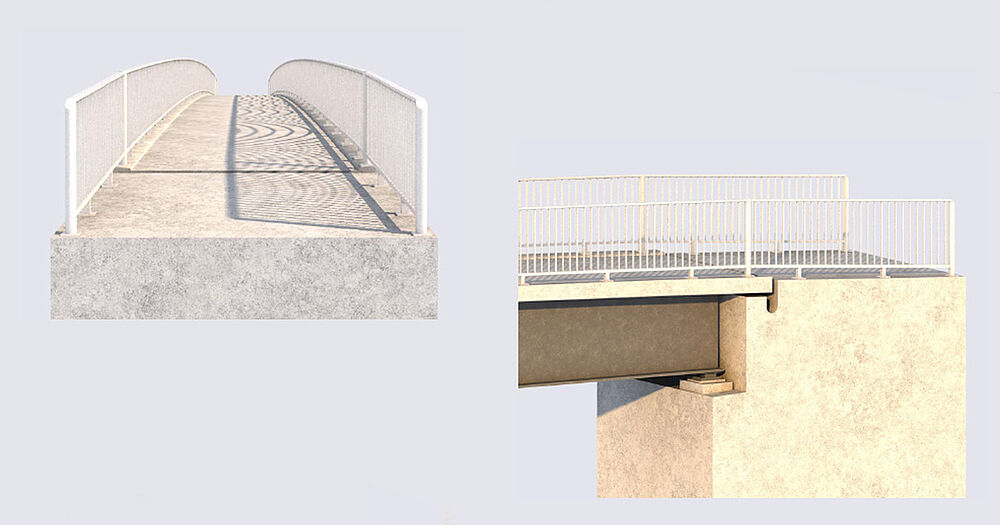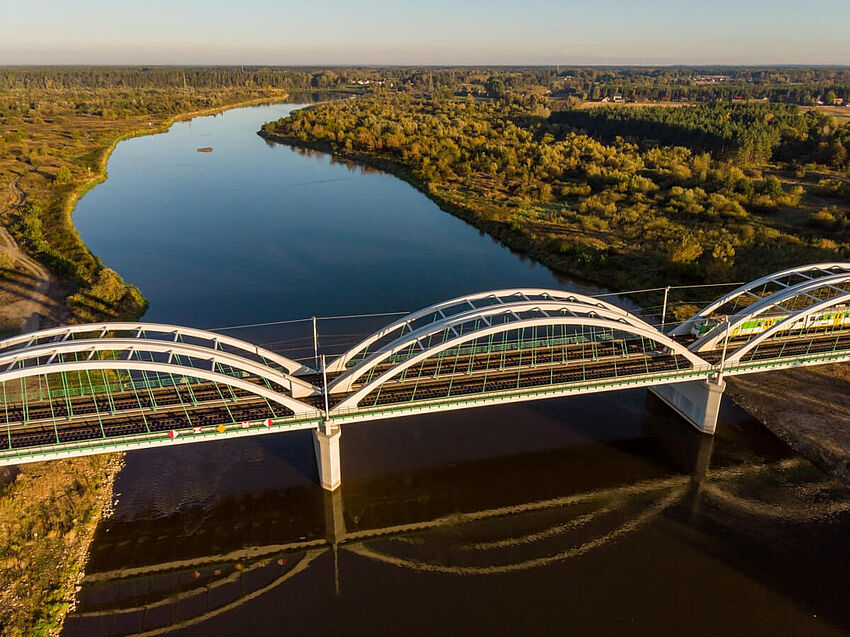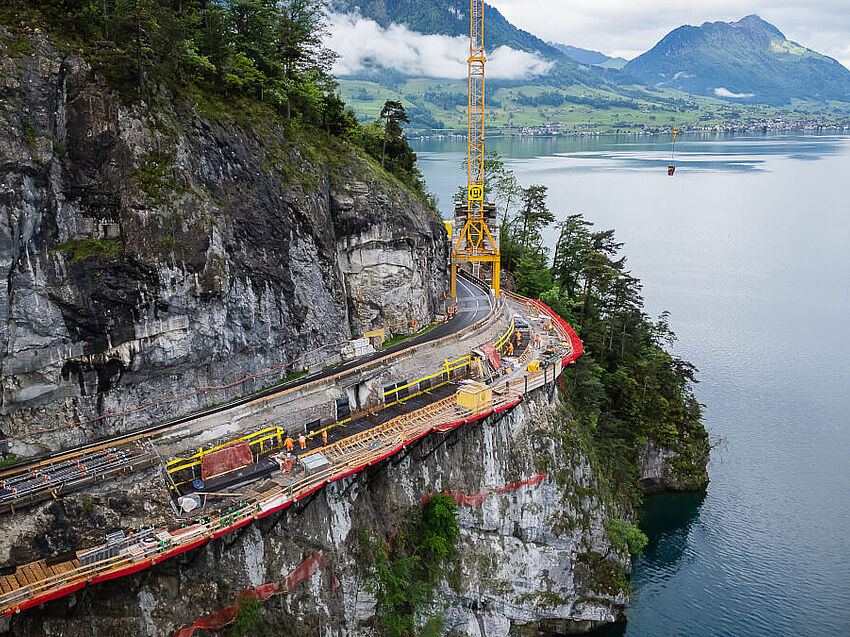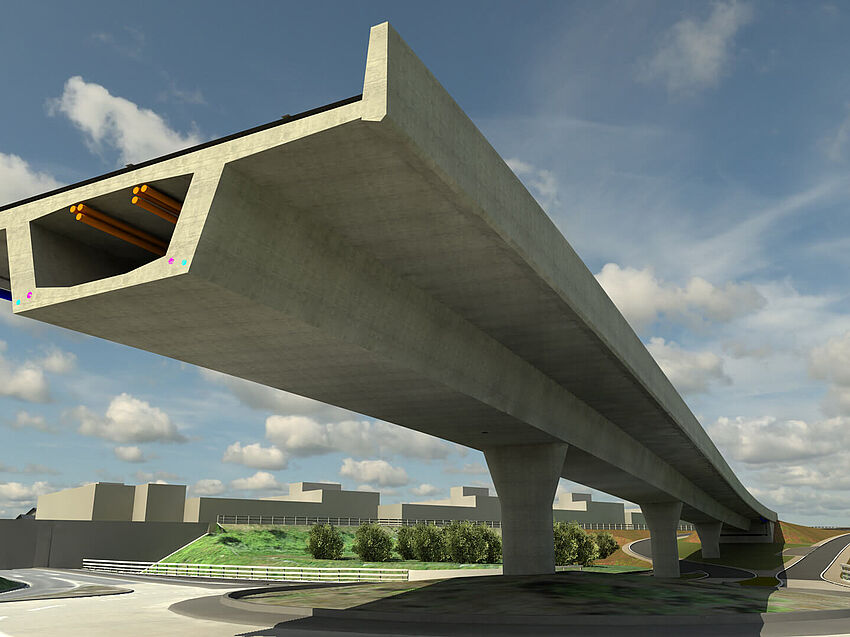To ensure that future engineers can design high-quality bridge structures efficiently and sustainably, students at HTW Dresden are trained to use ALLPLAN Civil.
Bridges are a crucial part of our infrastructure: in Germany alone, around 130,000 public bridges currently – and likely for the foreseeable future – keep traffic moving. However, a significant portion of these structures are in poor condition. To make both new construction and the strengthening of existing structures as long-lasting and sustainable as possible, high-quality planning is essential. The sheer volume of bridge construction projects, combined with time pressures and a shortage of skilled professionals, also demands extreme efficiency. Meeting both quality and quantity requirements simultaneously is only possible with state-of-the-art planning software. That’s why students at HTW Dresden are learning to work with ALLPLAN Civil.
Students Learn the Software Independently
In the “Computer Applications/BIM” module of the master’s program Sustainable Strengthening and Building in Existing Contexts, students are tasked with developing and visualizing a provided bridge structure as a digital parametric 3D model using ALLPLAN Civil (formerly ALLPLAN Bridge). Working in groups, each student team is assigned one of three pedestrian or cycling bridges, each with a different structural type: a timber tied-arch bridge, a slab bridge, and a composite bridge. Students learn how the software works largely independently through webinars, built-in help features, and introductory examples in ALLPLAN Civil, supported by lectures and consultations with instructors. Once the bridge modeling is complete (with a focus on the superstructure, curbs, and abutments), key structural details such as bearings and railings are added to the model using ALLPLAN.
Three Bridges Designed with ALLPLAN Civil
The first bridge – a predominantly timber tied-arch bridge – has a clear span of 25.60 meters and a usable width of 2.56 meters. Its main structural system consists of inward-leaning glued laminated timber arches. HEB transverse girders, combined with Bongossi longitudinal beams and an open plank deck, form the suspended carriageway. Major load-bearing elements (arches, ties, transverse girders, deck, and piles) are generated in ALLPLAN Civil; railings, bearings, and tie ends are added in ALLPLAN.
The second bridge – a two-span slab bridge – is based on a template from the German Federal Ministry for Digital and Transport (RAB-ING 3-6-2-1), with a clear span of 52.10 meters and a width of 5.00 meters. The superstructure consists of a 4-meter-wide, two-web slab beam made from prestressed precast concrete. In ALLPLAN Civil, parametric modeling includes the superstructure, piers, abutments, and piles. Railings and bearings are added in ALLPLAN.
The third bridge is 36.70 meters long and about three meters wide. It is notable for its composite cross-section. Key structural components modeled in ALLPLAN Civil include the composite deck, steel girders, and abutments. Railings, bearings, and tie ends are again added using ALLPLAN.
Parametric Planning with ALLPLAN Civil
HTW Dresden’s choice to train students using ALLPLAN Civil is no accident. This BIM software uniquely combines high-quality outputs with maximum planning efficiency for infrastructure projects. Parametric modeling enables users to create multiple design variants in a short time. The software also offers automated solutions for fast, accurate 3D reinforcement planning, including code checks, and precise structural analysis directly from the geometric model.
